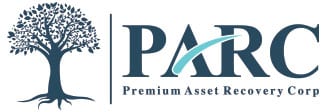Revenue Cycle Management (RCM): A Step-by-Step Guide for 2024

Navigating Self-Pay Medical Debt: Tips for Patients
November 9, 2023
The Role of Medical Debt Buyers in Healthcare 2023
November 22, 2023Welcome to PARC’s step-by-step guide on Revenue Cycle Management (RCM). In today’s complex financial healthcare environment, a deep understanding and effective application of RCM principles are essential for maintaining financial stability.
Understanding the Revenue Cycle
This guide starts with a straightforward overview of the revenue cycle in healthcare. You’ll get clear insights into its structure and function, setting the stage for a deeper discussion on the topic.
Key Stages and Their Importance
Next, we’ll examine the vital stages in the RCM process, each holding considerable influence over a medical practice’s financial results. Understanding each of these stages is crucial for successfully managing medical debt and revenue recovery.
Why Efficiency Matters
Efficiency in RCM is crucial. We will highlight the importance of an efficient RCM process and illustrate how it supports healthcare providers in achieving financial health and delivering excellent services.
Join us as we delve into the critical aspects of revenue cycle management. This guide offers valuable insights and practical knowledge for administrators and practitioners in the healthcare field, providing clear and valuable information for mastering healthcare finance and debt management.
Overview of the Revenue Cycle in Healthcare
What is Revenue Cycle Management?
RCM is a financial process healthcare providers use to improve the collection and management of patient service revenue. It incorporates the use of technology to track the financial process of a patient visit, from appointment scheduling to the final payment of balance. In essence, RCM provides a way for healthcare practices to refine their revenue cycle for optimized financial health.
Importance of RCM in Healthcare
Efficient RCM is foundational for the operational and financial stability of healthcare practices. It’s not just about billing; it’s an all-encompassing approach that starts when a patient schedules an appointment and doesn’t end until the account balance is zero. Facilitating seamless transactions and cash flow ensures that providers are compensated fairly and timely for their services, reducing the chances of accruing medical debt.
Challenges in RCM
Managing the revenue cycle is not without its challenges. Healthcare providers often face issues such as claim denials, underpayments, or delays in payments. These challenges necessitate having an effective RCM process in place that is not only reactive but also proactive in preventing such issues from occurring. Employing advanced technologies and RCM solutions can help providers mitigate these challenges, ensuring a steady and reliable revenue stream.
RCM and Medical Debt
Efficient RCM practices significantly impact how medical debts are handled. With effective RCM, healthcare providers can minimize the risk of unpaid services and manage patient debts more efficiently, thereby reducing the burden of medical debt on both the patient and the provider. Healthcare practices must implement effective RCM strategies to navigate the challenges of medical debt successfully.
Key Stages in the RCM Process and Their Significance
The Lifecycle of a Claim
Understanding the revenue cycle management process involves recognizing the lifecycle of a claim, which is the cornerstone of healthcare provider reimbursement. The claim’s lifecycle is a multi-step process, each crucial to ensuring timely and correct payment for services rendered.
Patient Pre-Registration
The process begins even before a patient walks into the clinic with pre-registration. This preliminary stage involves collecting initial patient information and verifying their insurance eligibility. Early data gathering streamlines subsequent stages, reducing administrative burden and enhancing the likelihood of timely reimbursements.
Eligibility Verification
Eligibility verification is a vital checkpoint to confirm a patient’s insurance coverage and understand the benefits they’re entitled to receive. This step helps prevent claim denials due to issues like coverage lapses, thereby safeguarding the provider’s revenue.
Charge Capture & Claim Submission
After service delivery, providers must accurately capture and itemize charges associated with the patient’s care. These charges are then compiled into a claim, which is submitted to the payer. The precision in this stage is non-negotiable, as inaccuracies can lead to claim rejections or payment delays.
Payment Posting & Reconciliation
Upon receiving the claim, the payer processes it and remits payment. Payment posting involves applying received funds to the appropriate patient accounts and services. Reconciliation is a balancing act, ensuring that expected and actual payments align and highlighting any discrepancies that may need attention.
Patient Billing & Collections
Post-insurance payment, patients are billed for their share of the costs. Efficient and clear billing practices facilitate prompt patient payments, whereas an effective collections process is crucial for recovering outstanding balances, thereby minimizing the risk of accruing unrecoverable medical debt.
Importance of Efficient RCM for Healthcare Providers
Ensuring Financial Stability
In the dynamic landscape of healthcare, maintaining financial stability is a challenge many providers deal with. Efficient revenue cycle management is a linchpin for financial health, providing a structured approach to securing timely payments, minimizing claim denials, and efficiently handling patient balances, which collectively lead to a steady and predictable revenue stream.
Facilitating Better Patient Care
Financial stability through effective RCM indirectly contributes to superior patient care. With reliable revenue streams, healthcare providers can invest in advanced medical technologies, continuous staff training, and improved facilities, collectively elevating the standard of care provided to patients.
Conclusion: The Value of Efficient RCM
In wrapping up our guide, it’s clear that efficient revenue cycle management is indispensable for healthcare providers. Not only does it serve as the backbone of financial stability, but it also enables practices to minimize medical debt, optimize operational processes, and ultimately provide better care to their patients. A thorough understanding and implementation of efficient RCM practices are essential for navigating the financial complexities inherent in healthcare, ensuring that providers can focus on their primary objective: delivering exceptional patient care.
Stay with us through future posts as we delve deeper into the intricate world of RCM, providing you with insights, tips, and best practices to fortify the financial health of your healthcare practice with confidence and ease.


